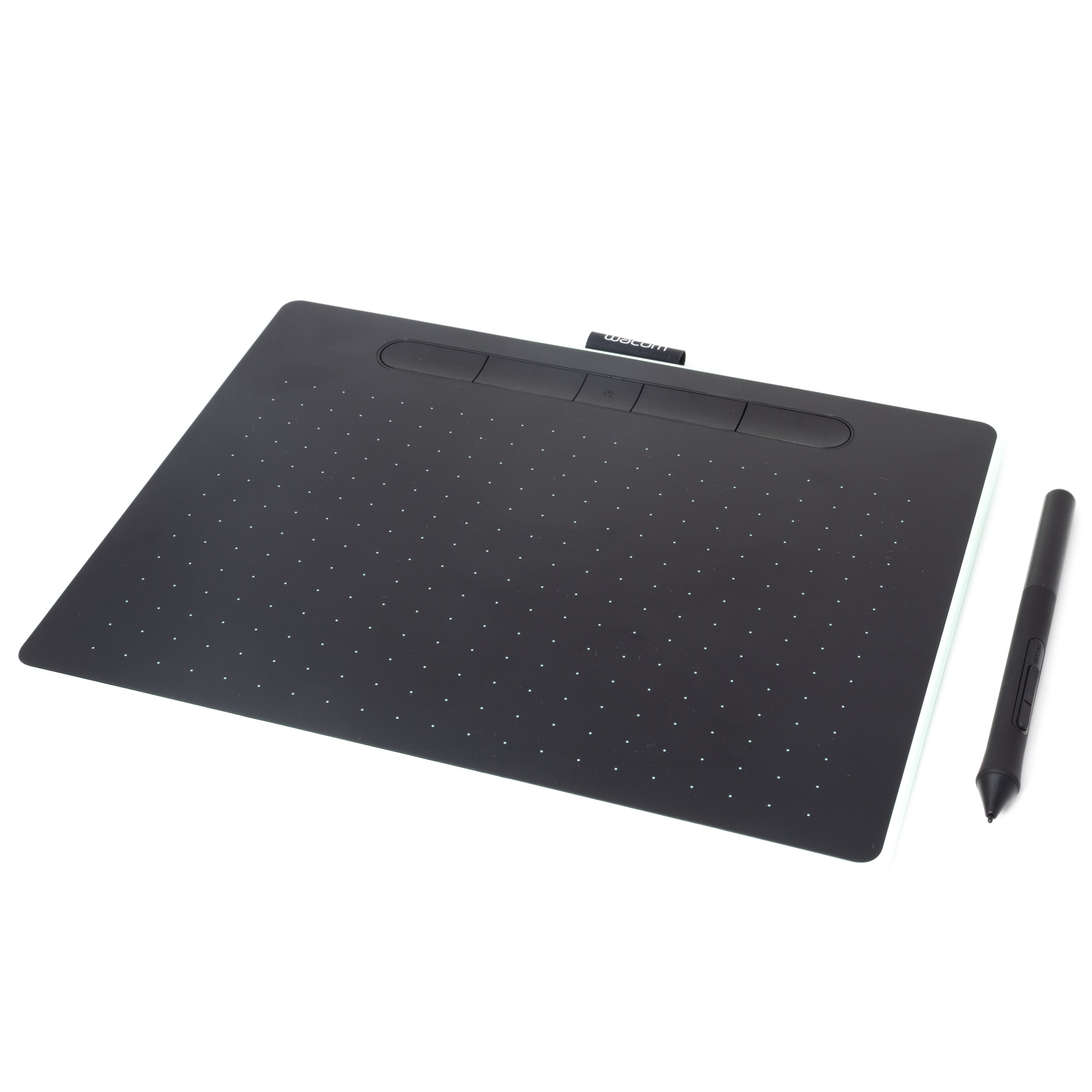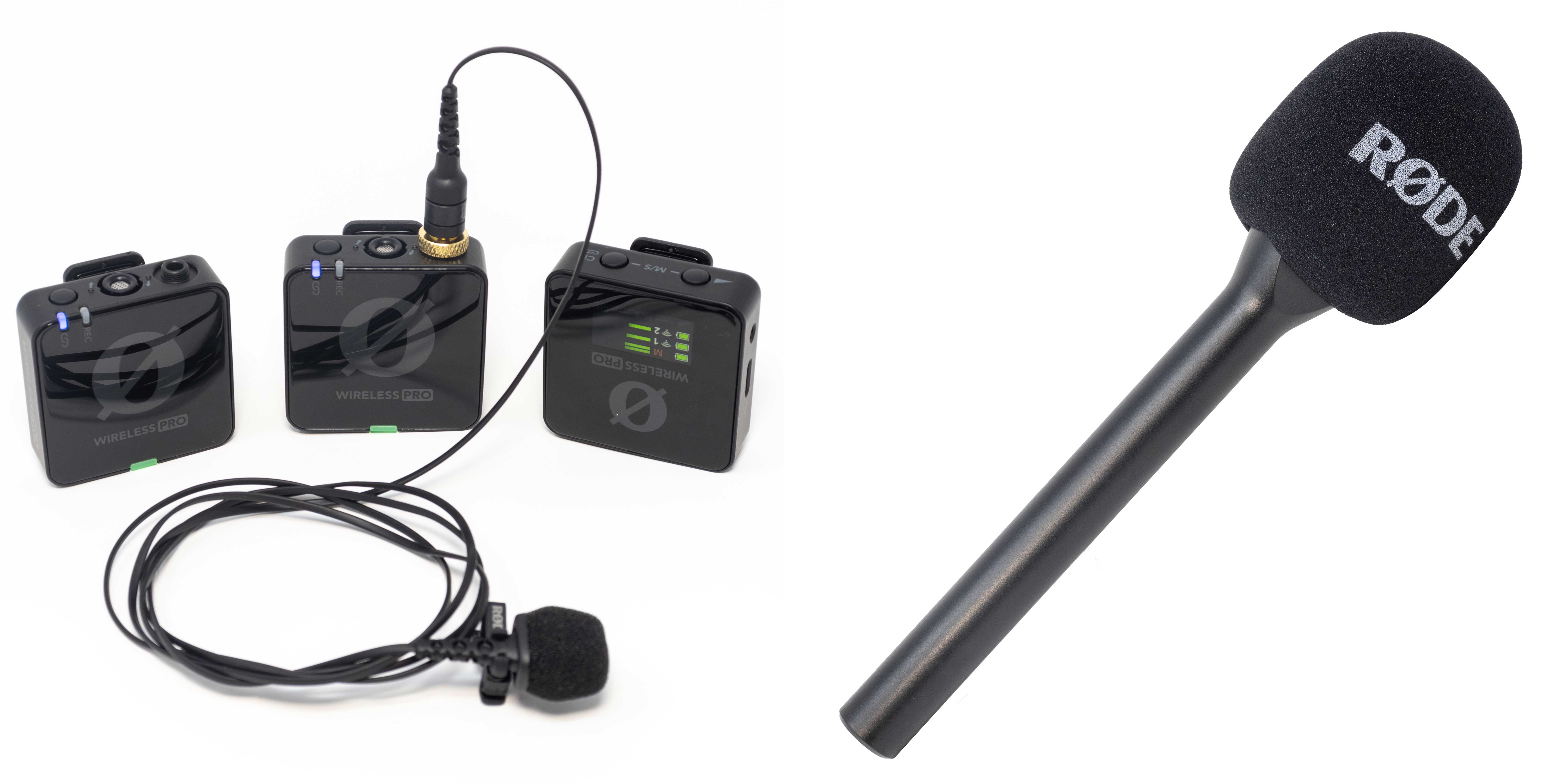A new semester is upon us, and we’ve got new equipment available for checkout! See our new LibCal reservation system to book an appointment or consultation.
Wacom Intuos Drawing Tablet

If you’re interested in digital art or photo editing, our Wacom Intuos provides a more natural drawing experience than your trackpad or mouse. The tablet connects to your computer via Bluetooth or cable and lets you control your cursor by moving the stylus around the tablet surface.
The stylus is pressure sensitive, meaning that in digital art apps, you can control the thickness or opacity of your line by drawing with more force.
The Intuos works with Windows, MacOS, and Chromebooks. For full functionality, you’ll need to download the Wacom driver for your operating system, which you can find by navigating here and searching for “CTL-6100WL – Wacom Intuos M BT”.
If you’re looking for alternatives to the industry standard software like Adobe Photoshop and Lightroom, here are some free and mostly open source alternatives:
Drawing/painting: GIMP, Pinta, Paint.NET (adblocker recommended), Krita, Milton, Photopea*, miniPaint*
Photo editing: Darktable, RawTherapee, RapidRAW, Polarr*
* indicates web-based applications
RODE Wireless Pro and Interview Go

This wireless microphone set is perfect for nearly all production environments, whether on the street or in the studio. Included are two small clip-on transmitters with internal microphones storage, allowing for versatile recording setups.
Each microphone transmitter connects wirelessly to the receiver, which can be plugged into a camera or smartphone for recording. But, in case the wireless connection drops, the transmitters have internal storage from which you can retrieve your full recording. If the transmitter is too bulky for your liking, the set comes with wired lapel mics that can be hidden underneath a shirt and connected to the transmitter on a belt or in a pocket.
These microphones feature a ’32 bit float’ which, in effect, provides much more range and flexibility in post-production. Whereas a 16 bit float smartphone microphone will have trouble recording the full range between a whisper and a scream, these mics pick everything up, allowing you to turn up or down anything you want in the track. If you don’t have a sound person for your production, these microphones let you worry about everything in post.
The optional Interview Go accessory (pictured right) lets you use one of the transmitters as a handheld microphone. The foam windshield is great for outdoor or on-the-street recording.
To retrieve and delete your recordings from the transmitters’ internal storage, you’ll need to download the RODE Central app and connect the case to your device with the included cable. It’s available for Windows, MacOS, iOS, and Android.
For a full device walkthrough, we recommend this video tutorial.
We recommend these free and mostly open source software for your A/V post production:
Video Editing: DaVinci Resolve, Shotcut, Kdenlive, wide.video*, Pikimov*
Audio Only: Tenacity (like Audacity, but better), Waveform Free, Wavacity* (Audacity in-browser)
* indicates web-based applications
Vello ActionPan Pro Stabilizer

If you’re shooting handheld video with a DSLR, you’re almost certainly going to want some sort of stabilizer. While most modern smartphones and camcorders have in-body image stabilization (IBIS) shakiness of handheld footage, DSLRs generally rely on less effective stabilization methods and produce shakier footage. Our ActionPan Pro will help you take smoother video with a lightweight and versatile rig.
The ActionPan Pro can be configured as a single top handle (image left) which makes shooting low angles easier. Alternatively, you can attach its second handle (image right) for a steadier grip. A shoe mount on the top allows for accessories such as our Movo shotgun microphone or the Viltrox light kit.
The video below demonstrates the difference between handheld and ActionPan footage recorded with our Canon SL3 with different digital stabilization settings. For more information on how digital stabilization works and its drawbacks, check out the Wikipedia description.
Mind you, this footage was taken while walking on the lumpy Quad by an amateur (myself) who has very little practice with camera operation. In my opinion, the ActionPan footage with digital stabilization turned off (bottom left) looks the best, since its wider field of view grants more leniency.
